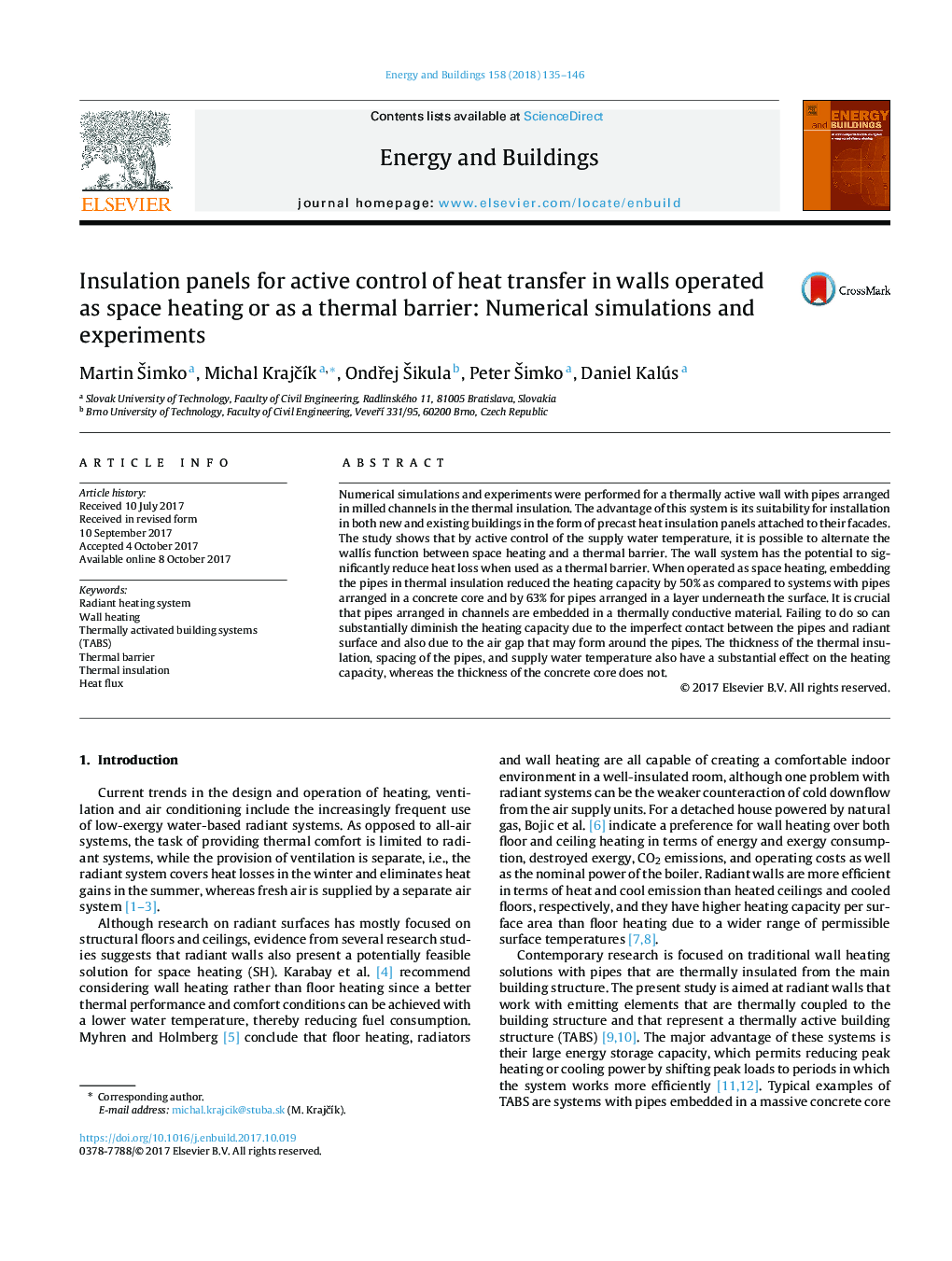| کد مقاله | کد نشریه | سال انتشار | مقاله انگلیسی | نسخه تمام متن |
|---|---|---|---|---|
| 4914090 | 1428932 | 2018 | 12 صفحه PDF | دانلود رایگان |
- Thermally active wall with pipes arranged in thermal insulation was investigated.
- The wall's function can be alternated between space heating and a thermal barrier.
- The system has the potential to reduce heat loss when used as a thermal barrier.
- Heating capacity is reduced compared to walls with pipes outside thermal insulation.
- Embedding pipes in thermally conductive material is crucial for heating capacity.
Numerical simulations and experiments were performed for a thermally active wall with pipes arranged in milled channels in the thermal insulation. The advantage of this system is its suitability for installation in both new and existing buildings in the form of precast heat insulation panels attached to their facades. The study shows that by active control of the supply water temperature, it is possible to alternate the walĺs function between space heating and a thermal barrier. The wall system has the potential to significantly reduce heat loss when used as a thermal barrier. When operated as space heating, embedding the pipes in thermal insulation reduced the heating capacity by 50% as compared to systems with pipes arranged in a concrete core and by 63% for pipes arranged in a layer underneath the surface. It is crucial that pipes arranged in channels are embedded in a thermally conductive material. Failing to do so can substantially diminish the heating capacity due to the imperfect contact between the pipes and radiant surface and also due to the air gap that may form around the pipes. The thickness of the thermal insulation, spacing of the pipes, and supply water temperature also have a substantial effect on the heating capacity, whereas the thickness of the concrete core does not.
Journal: Energy and Buildings - Volume 158, 1 January 2018, Pages 135-146
